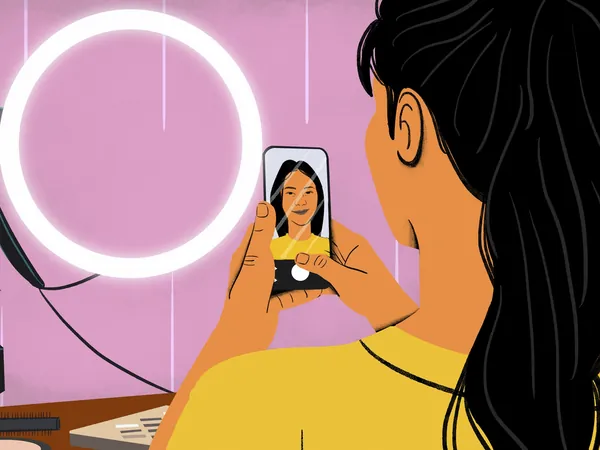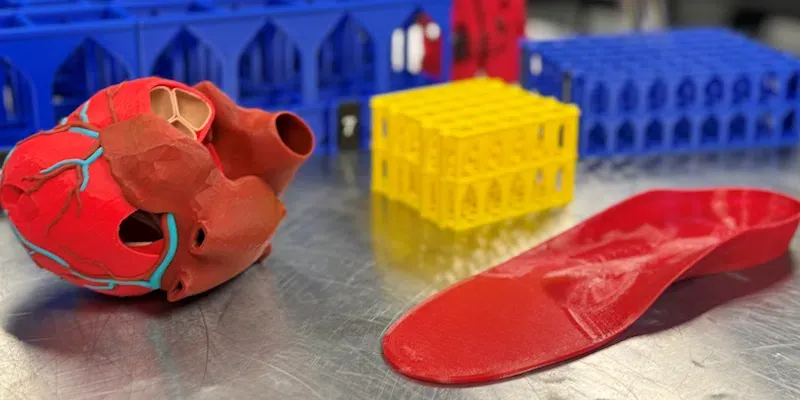
The TikTok ADHD Phenomenon: A Blessing or a Curse?
2025-03-24
Author: Charlotte
Introduction
As the conversation around mental health intensifies, TikTok has emerged as a popular platform for individuals seeking information about Attention-Deficit/Hyperactivity Disorder (ADHD). With millions of views on content labeled under the #ADHD hashtag, TikTok captivates users with entertaining and relatable takes on the disorder. While this surge in awareness has led many adults to pursue long-overdue diagnoses, experts urge caution — the platform may not be the best source for accurate ADHD information.
Misrepresentation of ADHD
Studies indicate that nearly half of the claims made in popular ADHD TikTok videos lack scientific backing and often misrepresent the complexities of diagnosing this condition. Many content creators simplify behavioral symptoms or exaggerate their effects, leaving viewers with skewed perceptions. Adding to the concern, numerous TikTokers promote ADHD-related products or services through links in their profiles, further complicating the credibility of their advice.
Research Findings
Recent research led by Vasileia Karasavva, a postdoctoral researcher at the University of British Columbia, has underscored the potential pitfalls of relying on TikTok for ADHD insights. By scoring the top 100 ADHD videos, the study revealed that many lacked the nuance necessary for a true understanding of the disorder. Furthermore, those who engage heavily with this content tended to believe their symptoms were worse than they actually are, reflecting a distorted view of ADHD.
Exacerbation of Inadequate Feelings
"The tendency to over-identify with TikTok content can exacerbate feelings of inadequacy," notes Karasavva. Such exposure often leads individuals to overestimate the prevalence of ADHD — with many inaccurately believing that close to 30% of people have the disorder, despite actual estimates of about 5% in Canada and 6% in the U.S.
Positive Impact on Awareness
Despite these concerns, there’s a silver lining. The increased visibility of ADHD on social media is fostering a greater acknowledgment of the disorder, particularly in adults who were previously overlooked. Psychologists like Maggie Sibley, from the University of Washington, emphasize the duality of TikTok’s impact — while some receive misguided information, others are empowered to seek help after recognizing their symptoms through relatable online content.
Entertainment vs. Education
TikTok's appeal lies in its entertaining format, with video creators often stepping away from dry clinical discussions to engage audiences with humor and relatability. Yet, this style begs the question: is entertainment overshadowing education? Kevin Antshel, a psychologist at Syracuse University, reflects on how individuals often show up at clinics with self-diagnoses based on TikTok videos, even specifying medication types and dosages without professional guidance.
Risks of Misuse
This phenomenon can lead to unnecessary treatment, particularly among adults misusing stimulants, especially on college campuses. Furthermore, the line between ADHD and symptoms indicative of other mental health conditions such as anxiety and depression often becomes blurred.
Need for Rigorous Research
Nevertheless, Sibley advocates for the utility of TikTok in providing awareness while underscoring the need for rigorous research on these novel ideas for understanding ADHD. With one in four adults in the U.S. potentially suspecting they have ADHD, there's a pressing need for definitive adult guidelines — efforts that are in development for release soon.
Conclusion
As we navigate this TikTok-driven ADHD landscape, the message remains clear: while social media offers a space for education and support, it must be approached with caution. Reliable information and professional guidance should always take precedence over entertaining but potentially misleading content. Ultimately, ADHD is a complex, lifelong condition that requires a nuanced understanding beyond the surface-level trends of viral social media clips.









 Brasil (PT)
Brasil (PT)
 Canada (EN)
Canada (EN)
 Chile (ES)
Chile (ES)
 Česko (CS)
Česko (CS)
 대한민국 (KO)
대한민국 (KO)
 España (ES)
España (ES)
 France (FR)
France (FR)
 Hong Kong (EN)
Hong Kong (EN)
 Italia (IT)
Italia (IT)
 日本 (JA)
日本 (JA)
 Magyarország (HU)
Magyarország (HU)
 Norge (NO)
Norge (NO)
 Polska (PL)
Polska (PL)
 Schweiz (DE)
Schweiz (DE)
 Singapore (EN)
Singapore (EN)
 Sverige (SV)
Sverige (SV)
 Suomi (FI)
Suomi (FI)
 Türkiye (TR)
Türkiye (TR)
 الإمارات العربية المتحدة (AR)
الإمارات العربية المتحدة (AR)